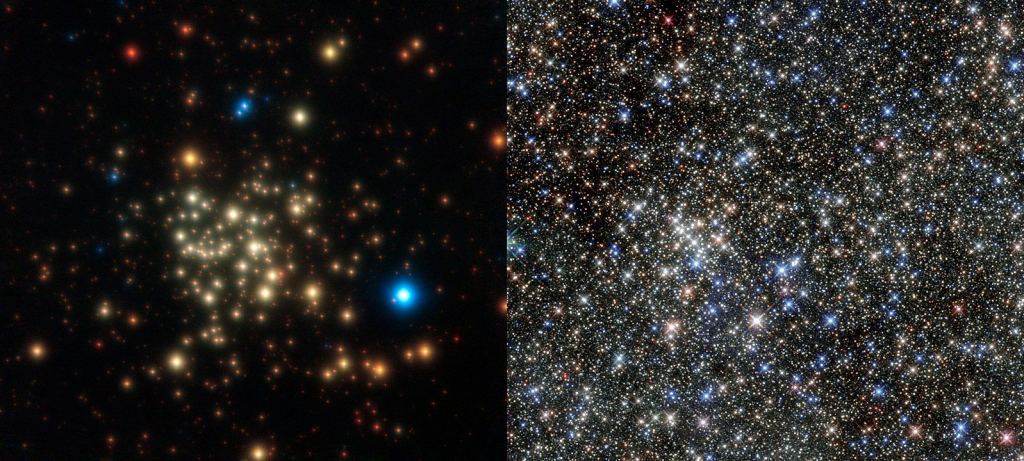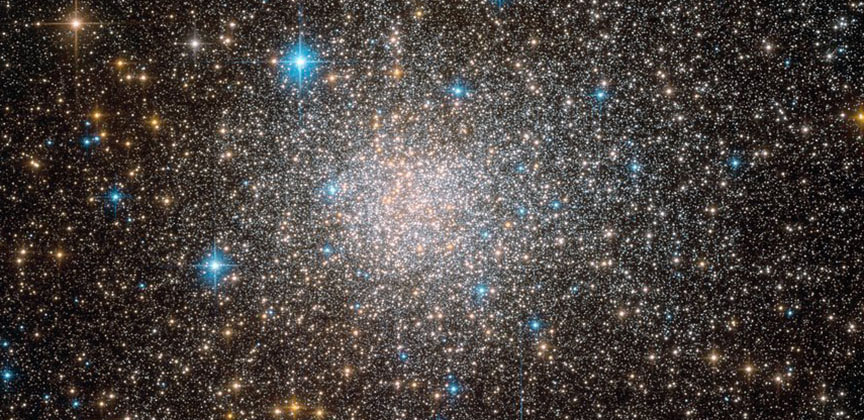Astronomers always like to look at incredibly violent places. Violence, in the astronomical sense, makes for rare conditions that can explain much about our universe. One of the violent places that astronomers love to study is the center of our Milky Way galaxy. Now, astronomers from the Center for Astrophysics (CfA) at Harvard have come up with a new catalogue of some of the most intense areas near the galactic core. They hope it will increase our understanding of these potential star-forming regions – and help explain why so few stars are actually formed in them.
The area of the galaxy they studied, known as the “central molecular zone” (CMZ) spans the 1600 light years closest to the supermassive black hole at the center of the Milky Way. That is approximately 16 times closer to the galactic center than our own sun is. Almost everything about this part of the galaxy is more “intense” than the further out reaches. The molecular gas clouds that comprise it have higher magnetic fields, radiation, and even pressures and temperatures. They also make up an estimated 60 million solar masses in weight.
These types of extreme conditions are ideal places for stars to form, though there are several evolutionary steps the molecular gas clouds must go through before ending up as a ball of nuclear fusion. First, the molecular gas must form into “clumps” between 1 and 10 light years in diameter. If enough material accretes into a given clump, it can move on to the next stage, where it forms what is known as a “core”. Cores are about 10% the size of a clump, but contain all the same material, and therefore have much higher temperature and pressure than their predecessors. Cores then occasionally give birth to individual stars.
This process is extremely slow and can take millions of years to transition from one state to another. To truly grasp how these transitions might happen, it is best to study as many distinct clumps as possible to watch discrete points in the evolution of the systems. Foreground and background emissions (i.e. noise) have so far made it extremely difficult to assess the prevalence of clumps or cores anywhere near the center of the galaxy, however.

Credit: (L) ESO / P. Espinoza – (R) ESA / Hubble
What was needed to tease the signal from the noise was a significant amount of time on a very powerful telescope. That is just what the research team received by obtaining 550 hours of observing time on the Submillimeter Array (SMA). With their data in hand, the team scoured it to find 285 new stand-alone cores that could eventually begin to form a star. Additionally, there are 531 other potential core candidates in the data, but their presence was not conclusive enough to include them in the total count without further confirmation first.
Confirmation of another interesting observation was also hidden in the data – that cores form stars as a much lower rate than would be expected via modeling. In fact, the data from the SMA point toward star formation being as common elsewhere in the galaxy as it is in the cores at the violent center of the galaxy. That puzzles astronomers, as the higher pressures and temperatures in the center of the galaxy should be more conductive to the formation of stellar objects.

Credit: NASA/ESA/Hubble/F. Ferraro
There are some theories as to why there is a discrepancy between the expected star formation rate of these regions and the rate observed by the SMA survey. However, more data will need to be collected before any hypothesis can be confirmed or refuted. The catalogue collected by the CfA astronomers makes a good start toward collecting that data though.
Learn More:
CfA – Cold Dust Cores in the Central Zone of the Milky Way
CfA – High Pressure Star Formation in the Galactic Center
UT – Astronomers can Predict When a Galaxy’s Star Formation Ends Based on the Shape and Size of its Disk
UT – This is the Core of the Milky Way, Seen in Infrared, Revealing Features Normally Hidden by Gas and Dust
The Astrophysical Journal – CMZoom. II. Catalog of Compact Submillimeter Dust Continuum Sources in the Milky Way’s Central Molecular Zone
Lead Image:
False color image of the CMZ delineated by density and the optical wavelength the clusters give off.
Credit: Battersby et all

